Beware of potential risks when using international payment cards: Convenient, but also easy to lose money
- Tram Ho
Recently, there have been many cases of Vietnamese users having money stolen from international payment cards (Visa, MasterCard, JCB…). Most are due to card information leakage and being used by bad guys to appropriate money, mainly through online payment services. Therefore, although there are certain benefits to using international payment cards, these cards also have potential risks when used, especially for those who subjectively do not protect their information. information on the card.
What is an international payment card?
According to Timo Bank, an international payment card is a card issued by domestic banks that have links with international financial institutions. The advantages of international payment cards include convenience, safety, easy use anywhere, including domestic and global payments, along with many incentive programs.
Currently, international payment cards are divided into 4 popular types, linked with 4 different financial institutions: Visa, MasterCard, JCB and American Express. Each type is classified according to each card’s function such as debit card (Debit), credit card (Credit) and prepaid card (Prepaid), in which debit and credit cards are very popular in Vietnam.

Types of international payment cards are popular today – Photo: Timo
The advantage of an international payment card is that it can be transacted directly or online without requiring the card’s PIN code, making payments anywhere in the world, and being used with almost all financial services. deployed globally, can even withdraw money anywhere just need bank support. With international credit cards, users can also spend on installment purchases with 0% interest or low conversion costs.
In case of direct payment, users only need to use international payment cards to swipe or tap (for contactless cards). In case of online payment, users are required to provide the following information: card number, cardholder name, expiration date and CVC/CVV code.

CVC/CVV is a 3-digit numeric code on the back of each international payment card – Photo: OCB GO
However, depending on the place of payment, they do not require a CVC/CVV code, thereby creating safety risks when revealing card information.
Lost money because of card information disclosure
As mentioned, over the past time, there have been many cases of consumers having money stolen from their bank accounts through linked international payment cards. In most of these cases, more or less card information has been exposed, creating opportunities for fraudsters to take advantage of vulnerabilities to perform fraudulent transactions.
Most units that accept online payments will require full card information as we mentioned above, and accompanied by an authentication step equal to the OTP code sent to the phone number registered at the bank. card issue. After entering the OTP, the user’s account will now be deducted.
However, some payment acceptance units for some reason do not comply with the above security steps, such as no CVC/CVV number of the card, no need for OTP authentication… This leads to loopholes. allowing crooks to take advantage of the property when having the victim’s card information.
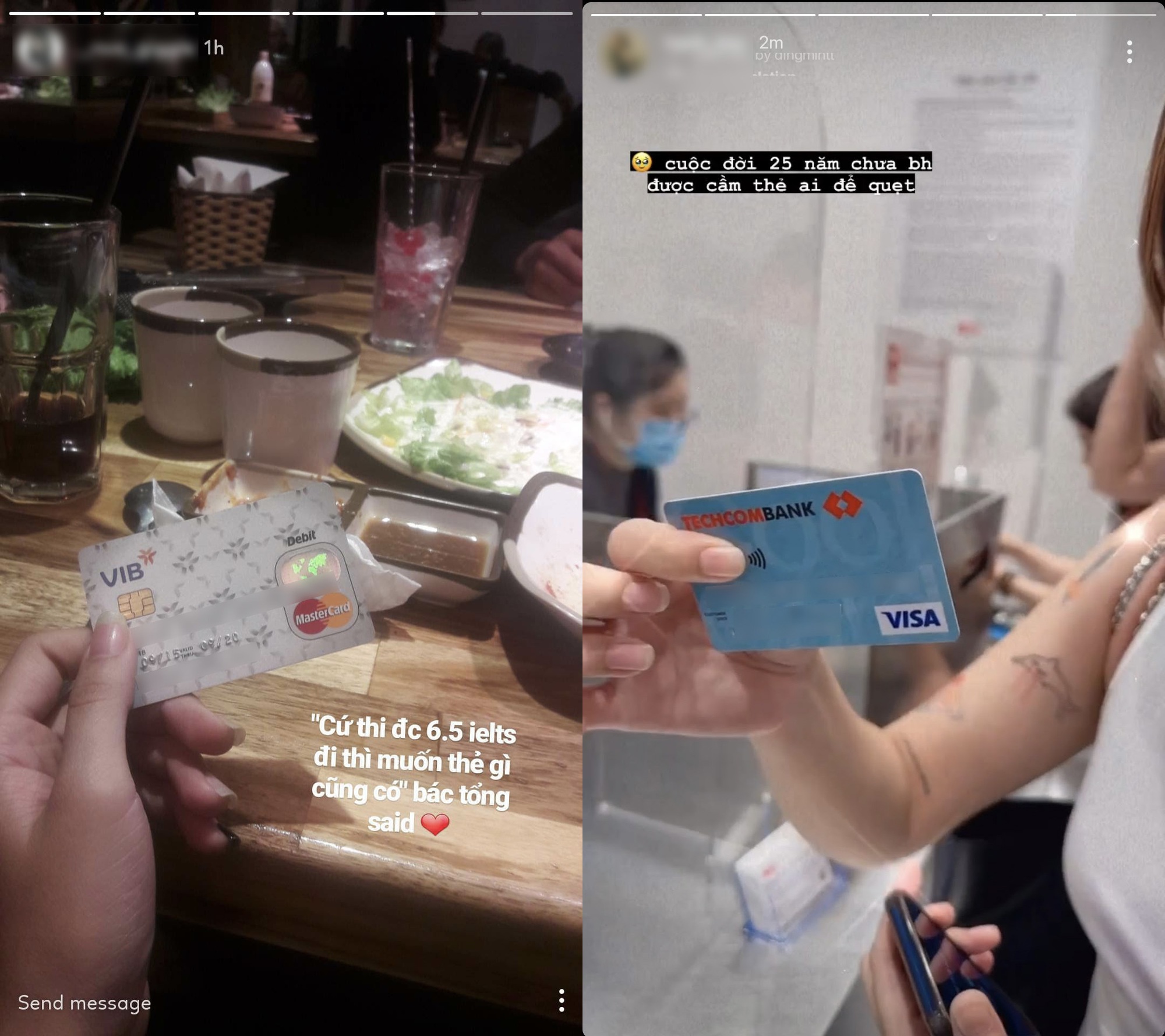
You can completely lose money just with stories “showing off” the card like this (card information has been blurred) – Photo: Screenshot
With only 2 information: card number and expiration date, crooks can completely take money from the victim’s account, or if the CVC/CVV number is needed, just use techniques like “brute force” ( try consecutively until successful) to find out the results quickly, because the CVC / CVV number of the card only includes 3 numeric characters, ie the total possible case is only 1000, it only takes a few tens of minutes for It took a few hours to find this code.
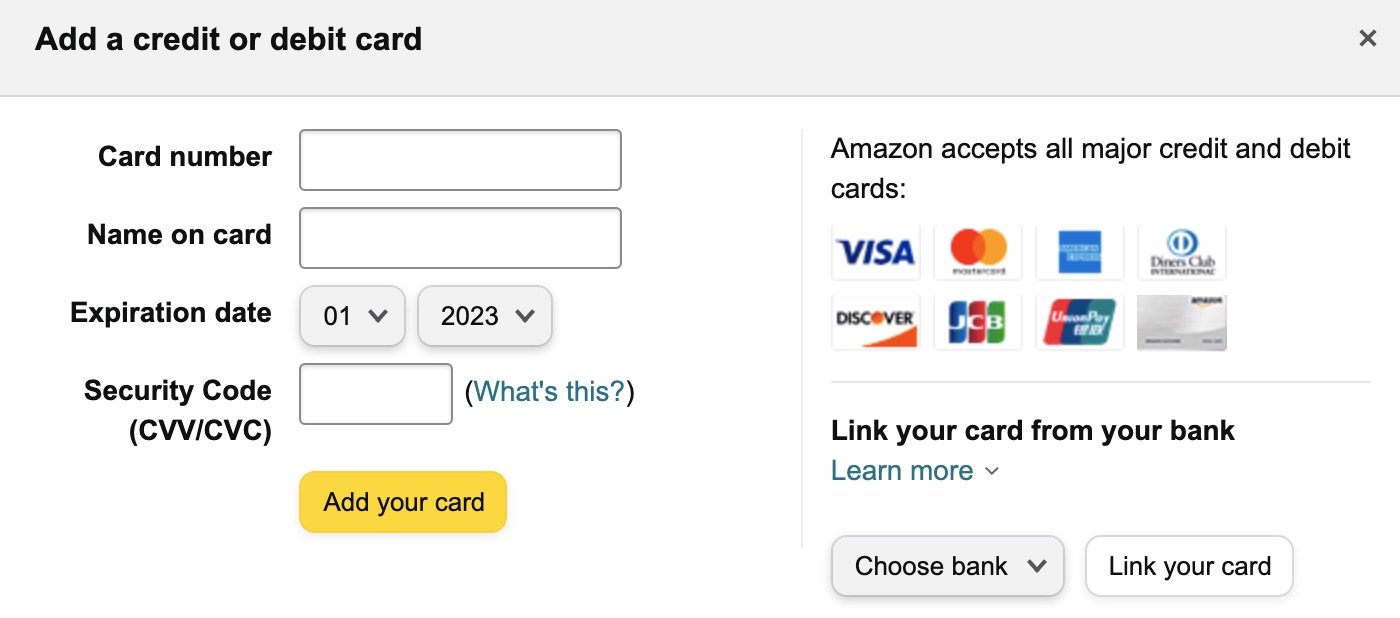
Card acceptors will ask for full card information, along with an OTP verification code after each payment – Photo: Amazon
A recent case where many people lost money through the Facebook Ads service. This unit does not require OTP authentication code when paying and anyone can use it, so Facebook Ads are often used by crooks to “hack” money from bank cards.
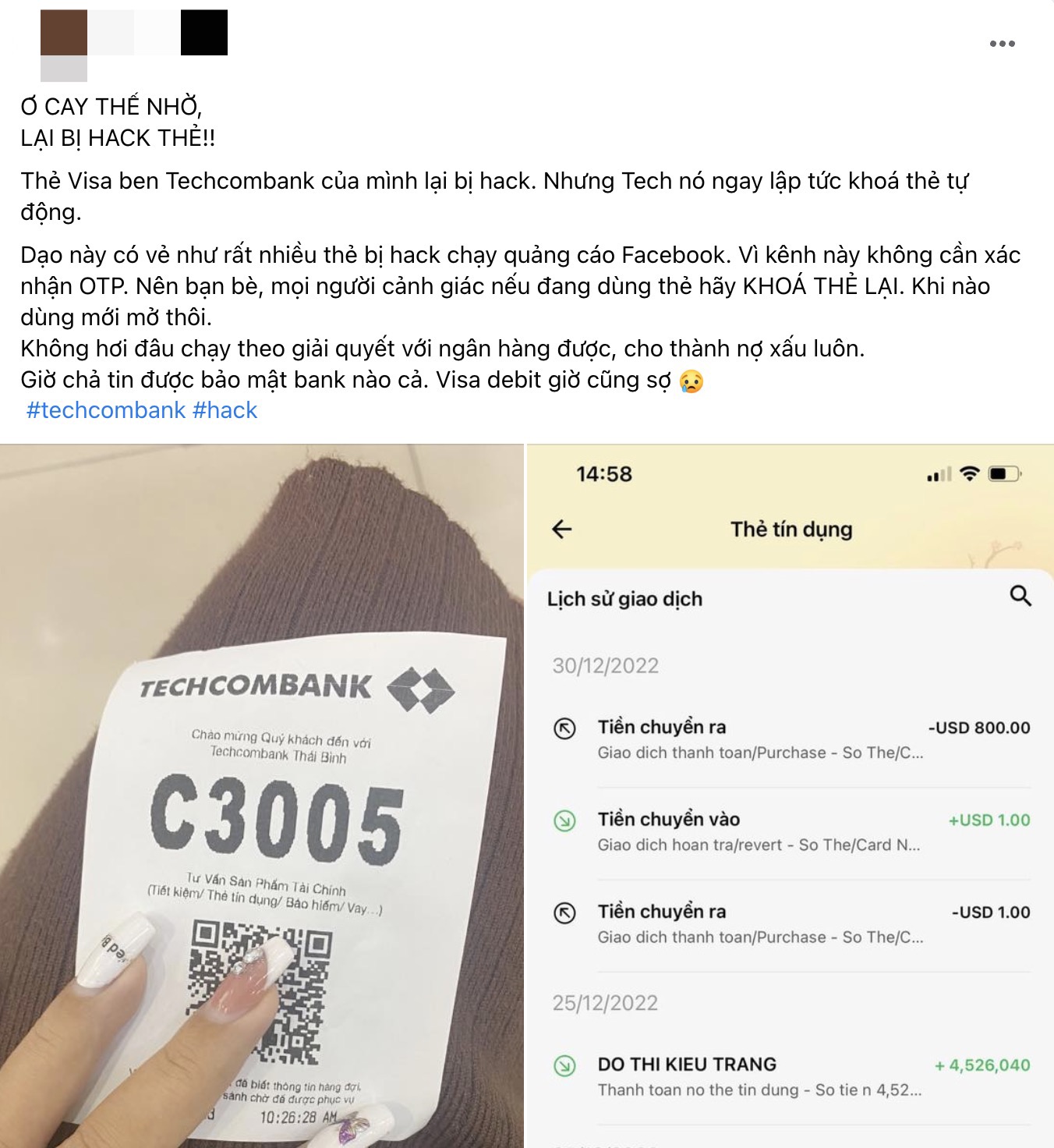
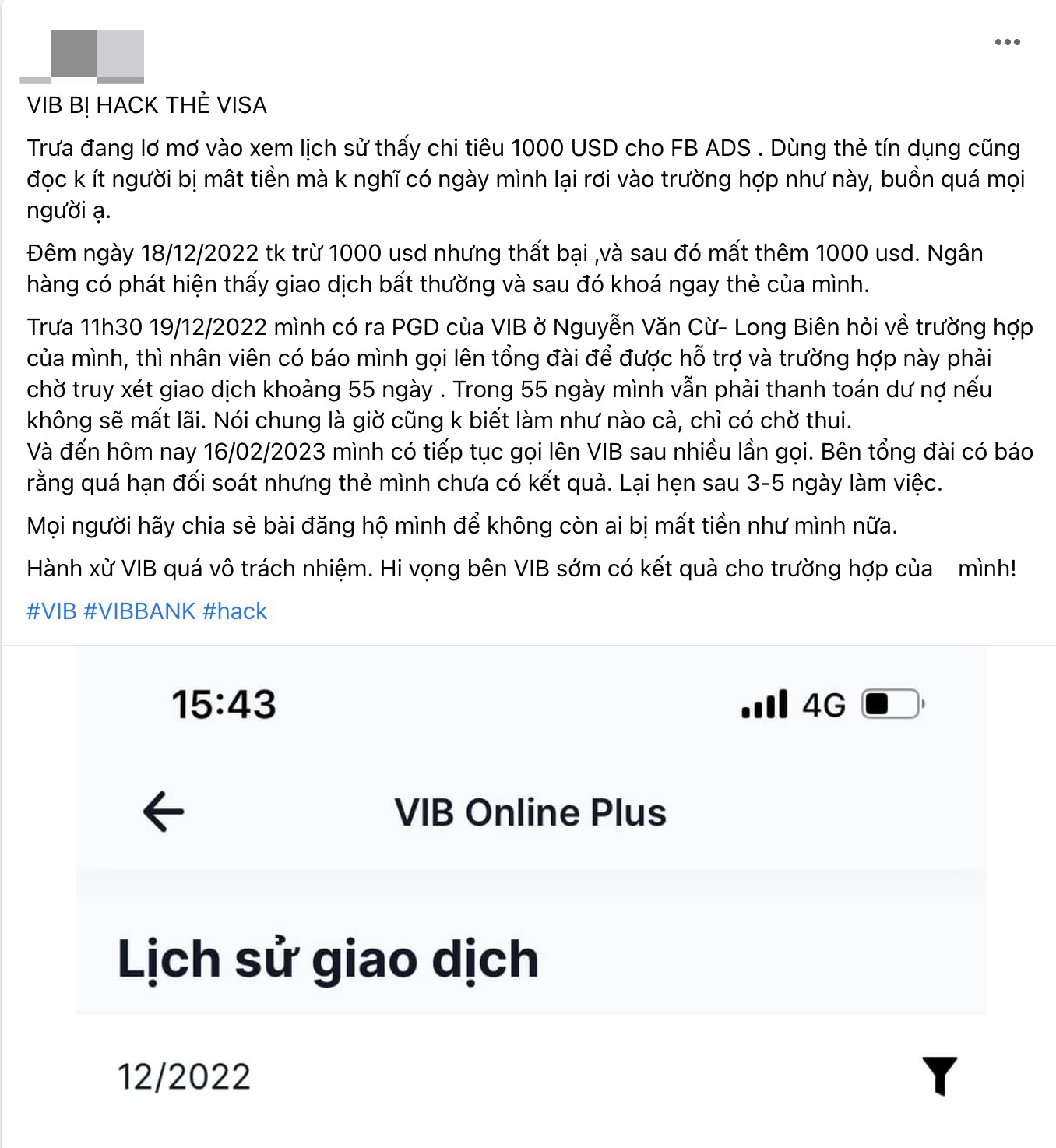
2 of the cases where the fraudster took money from the credit card through the Facebook Ads service – Photo: Screenshot
Besides, for those who often pay directly by swiping or touching the card, the risk of revealing card information is completely possible. For example, when going to a restaurant, at the payment step, the user gives the card to the employee to swipe, this time the crook can capture the customer’s card information on both sides and use it for bad purposes.
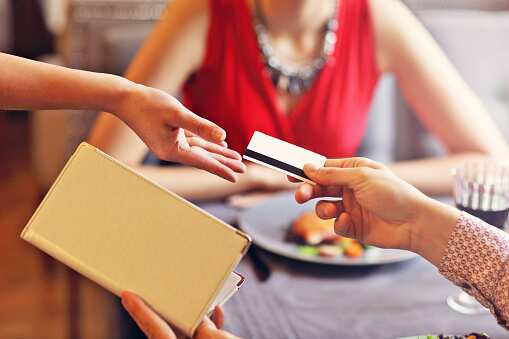
Risks when giving payment cards to others – Photo: internet
How to use international cards safely?
In recent years, the use of international payment cards has become much more popular because of the diverse needs of users such as online payment, international shopping, flight booking… However, Thanks to the popularity of this card, there are always potential risks during use, especially for those who are not equipped with the necessary knowledge.
VPBank offers a number of simple measures to protect card information during use as follows:
– Find a way to cover/delete the CVV/CVC number on the card and memorize them or save the information elsewhere: Can use broken stamps to cover, or completely erase the CVC/CVV number from the back of the card.
– Register for SMS Banking to authenticate OTP for necessary transactions. If you suddenly receive an OTP informing you of a transaction that was not made by you, this will be a sign that your card information is being exposed.
– Sign the back of the card: You can sign your name on the back of the credit card. The store staff is responsible for comparing this signature with the signature on the purchase invoice, these two signatures must be the same for you to make the transaction.
– Restrict access to websites that are not reputable, have poor security as well as avoid entering card information into websites of unknown origin.
In addition, your payment card information is confidential, remember not to lend your card to anyone else and do not post photos containing any payment card information, if required, blur the This information is for your safety. Users can also set a payment limit for a transaction, or a low day, or lock the card when not in use, when needed to transact online, reopen the card and then lock it again.
In addition, when detecting an unauthorized transaction or a card showing signs of information being stolen, it is necessary to immediately lock the card and contact the card issuer for support as soon as possible. Then proceed to re-issue the card with the new card number, expiration date and CVC/CVV.
Source : Genk
